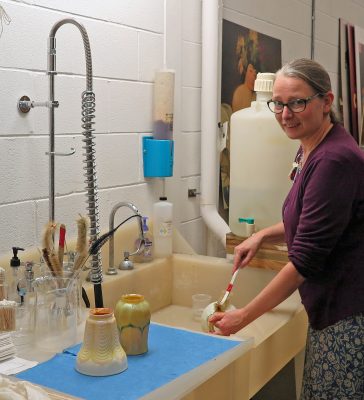This blog post was written by Nancy Magrath, Library Collections Management team member.
 Glassworkers have a long tradition of making whimsies—fanciful objects to show off their creativity, skill, and humor. These were personal items made during work breaks and at the end of long, hot days at the factory in the late 1800s and early 1900s. Glassworkers made chains, sock darners, rolling pins, paperweights, animals—whatever struck their fancy. In England, these objects were called “friggers,” but in the United States the term was considered too vulgar, so the term “whimsy” was born.
Glassworkers have a long tradition of making whimsies—fanciful objects to show off their creativity, skill, and humor. These were personal items made during work breaks and at the end of long, hot days at the factory in the late 1800s and early 1900s. Glassworkers made chains, sock darners, rolling pins, paperweights, animals—whatever struck their fancy. In England, these objects were called “friggers,” but in the United States the term was considered too vulgar, so the term “whimsy” was born.
One particularly flamboyant type of whimsy was the cane, as in a walking stick. Canes were made in different colors and sizes with varying degrees and types of ornamentation—the more extravagant the better! Some glass canes were 6 to 8 feet long and were topped by objects such as fish bowls, goblets, and musical instruments to display the glassworker’s special skill. Canes, like other whimsies, were often given as gifts or sold to family, friends, and coworkers. Canes were also bartered; local bars often had a collection of canes displayed on their walls, accepted in exchange for drinks. Read more →









